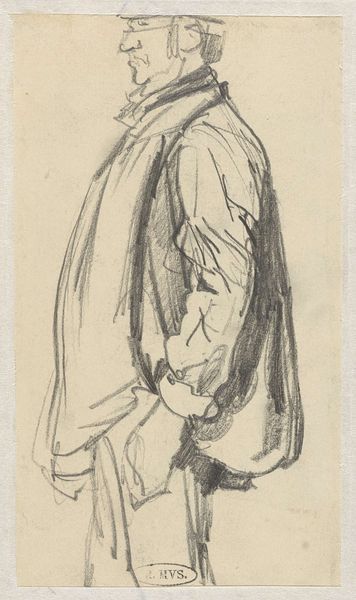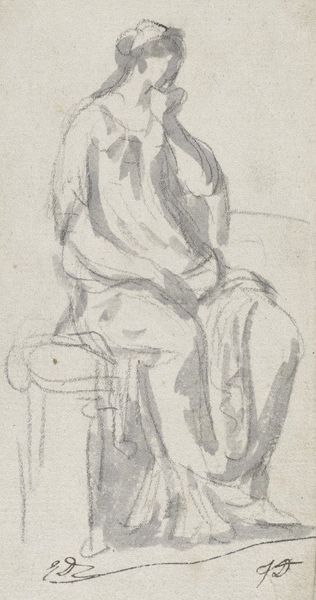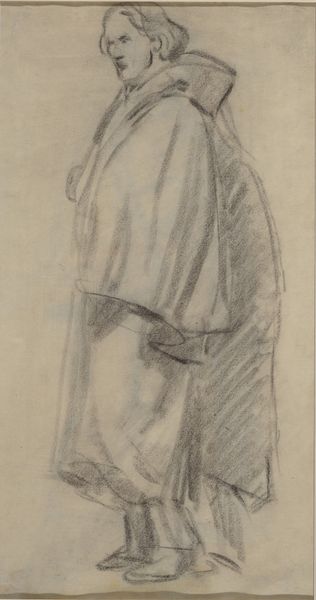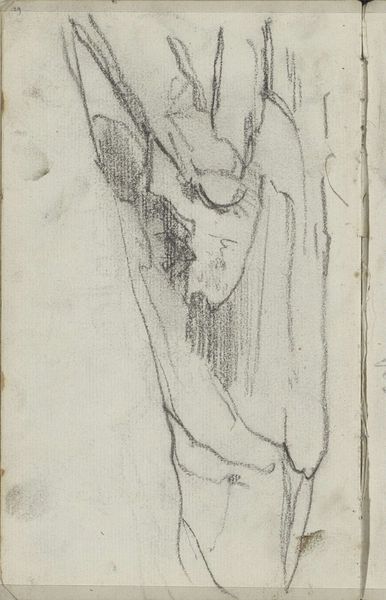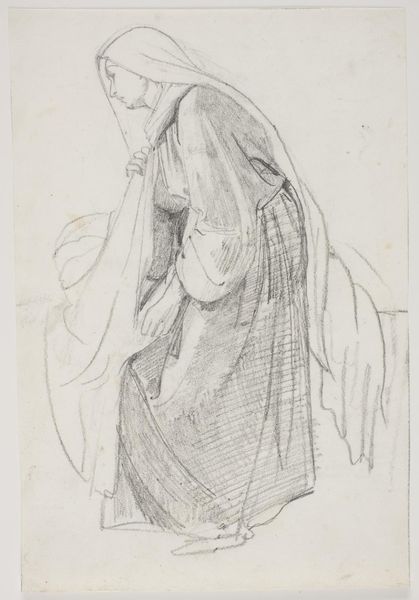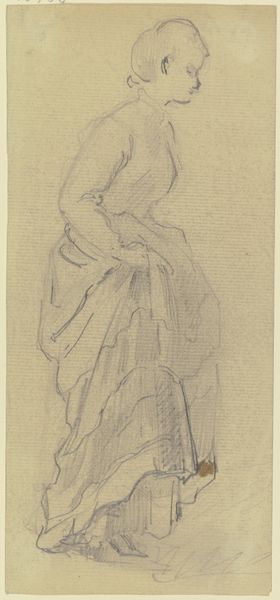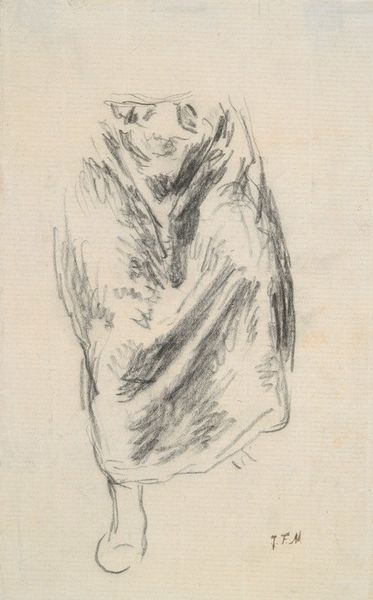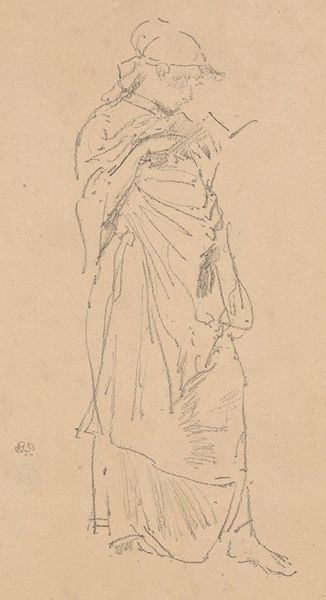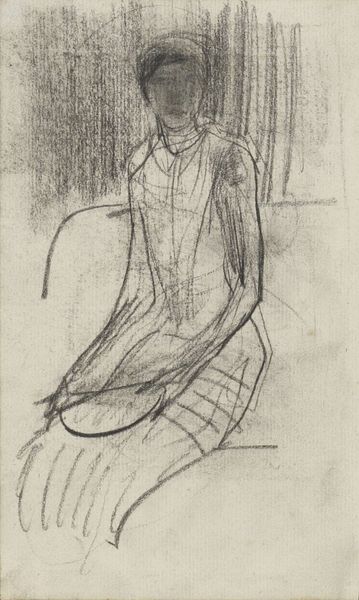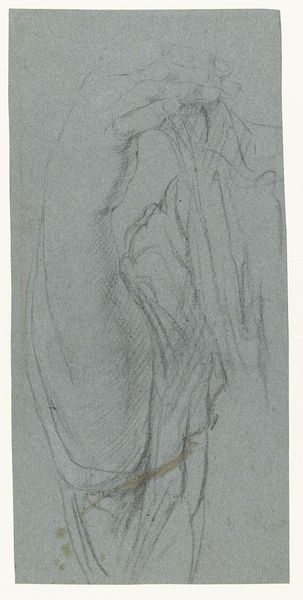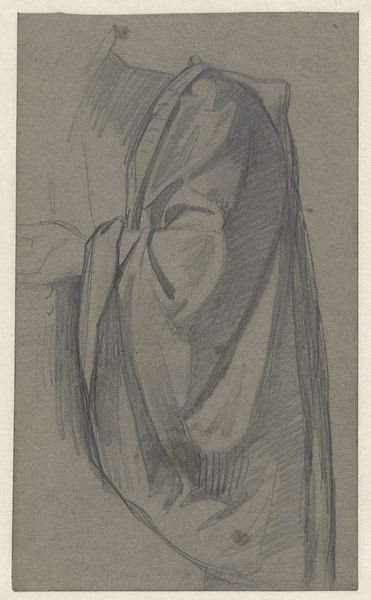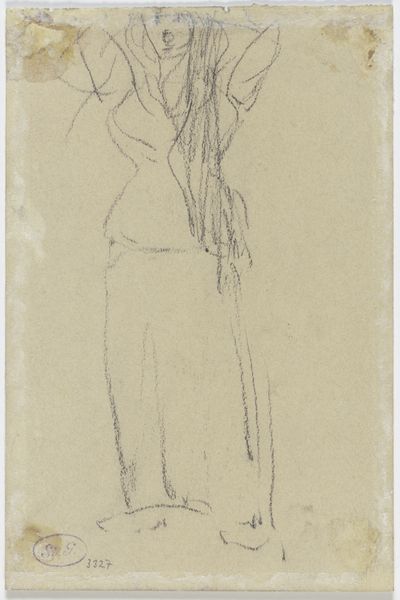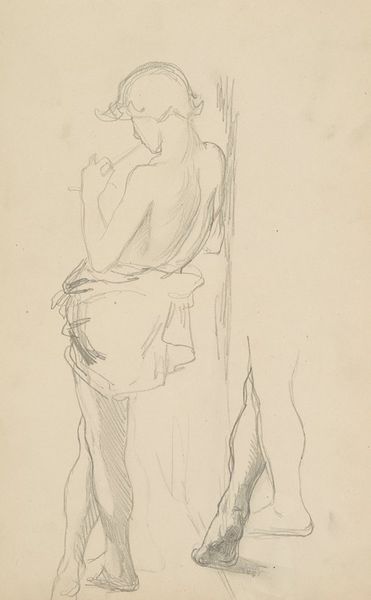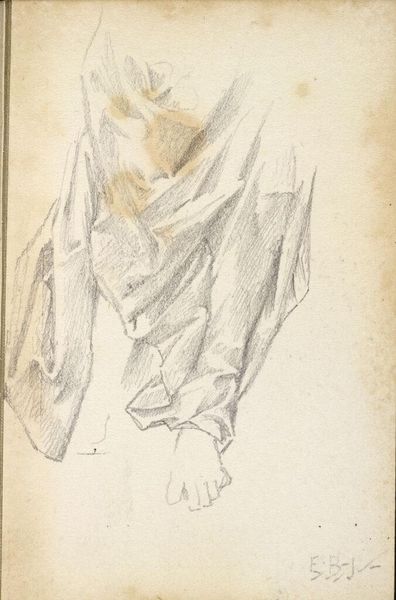
drawing, ink, pen
#
portrait
#
drawing
#
pen sketch
#
figuration
#
ink
#
ink drawing experimentation
#
pen
#
genre-painting
#
realism
Dimensions: height 103 mm, width 58 mm
Copyright: Rijks Museum: Open Domain
Curator: Welcome. Before us, we see "Standing Clergyman with Glasses", a drawing in ink and pen by David Bles, created sometime between 1831 and 1899. Editor: It strikes me immediately as a piece imbued with melancholy. The lines are so delicate, almost hesitant, as if the clergyman is weighed down by the world. Curator: Note how Bles uses the economy of line to suggest form and volume. The figure is not rigidly defined; rather, he's suggested through subtle modulations in the pen strokes, especially in the drapery. The structural integrity relies on the careful weighting of these lines. Editor: And those glasses perched on his nose, almost comically oversized, contribute to this feeling. The artist’s depiction of this religious man brings up interesting questions about social roles and religious authority in Dutch society at the time. It seems more of a critique. Curator: While social context certainly enriches our understanding, let’s not overlook the materiality. The absorption of ink on paper is key; those subtle imperfections lend an authentic quality to the artwork, emphasizing the handmade. See also the artist's mark. Editor: I agree. The sketch certainly highlights Bles' skill. Considering it now sits in the Rijksmuseum, it's interesting how its value shifts. Once a possible study or quick sketch, now, within a museum, it's given elevated status. Curator: The institutional framework always mediates our engagement with art. It redefines the intention and audience, impacting our semiotic reading. Editor: True. Ultimately, Bles gives us an evocative depiction of an individual but also speaks to the ever-changing context that we, as viewers, bring to the art object. Curator: Yes. The genius lies in Bles’ skillful execution of the line to draw us closer into considering structure and intent within the historical perspective that's provided.
Comments
No comments
Be the first to comment and join the conversation on the ultimate creative platform.
